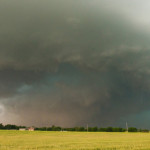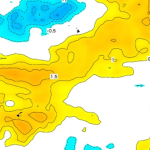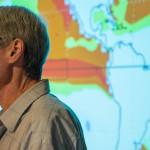Results for 'forecasts'
Found 528 results.

April Climate Briefing: El Niño, For Now
From the April climate briefing, given by IRI’s Chief Forecaster Tony Barnston: Tony Barnston provides an overview of the briefing Changes from last month’s briefing A weak El Niño continues in the central Pacific, and the chance that such conditions will persist has risen since last month’s forecast. It hovers around 80% through late summer, although it should be noted […]

One Size Fits None: Drought forecasting in the Caribbean
This post contains excerpts from the full version on our Medium account. Most extreme climate and weather events involve an unwanted surplus — too much rain, too much wind or too much snow and ice. Drought is a little different: it’s the absence of something. It takes time for a drought to build, making it fundamentally different to monitor […]

#WorldMetDay: Climate Knowledge for Climate Action
Today is World Meteorological Day, this year themed Climate Knowledge for Climate Action. Since this is basically the name of our game here at the International Research Institute for Climate and Society, we thought we’d share some of our recent, related activities. Working with the World Meteorological Organization Earlier this month, Rupa Kumar Kolli, Chief of the World […]

March Climate Briefing: El Niño’s Beginning..or End?
From the March climate briefing, given by IRI’s Chief Forecaster Tony Barnston: Tony Barnston provides an overview of the briefing https://youtu.be/D9bqP0V7j8E Changes from last month’s briefing Earlier this month, the National Oceanic and Atmospheric Administration’s Climate Prediction Center and IRI issued an El Niño advisory, which indicates that El Niño conditions are present and expected to persist for the […]

Video: Managing Water in a Dry Land
The Elqui River valley lies in Chile’s northern, mountainous Coquimbo region, which is extremely dry. The region receives only about 100 millimeters (4 inches) of rain each year, and most of it during one short rainy season. The rainfall is also highly variable and driven in large part on El Niño and La Niña fluctuations. In some years, […]

Frequency of Tornadoes, Hail Linked to El Niño, La Niña
Study May Aid Seasonal Forecasting Climate scientists can spot El Niño and La Niña conditions developing months ahead of time, and they use this knowledge to make more accurate forecasts of droughts, flooding and even hurricane activity around the world. Now, a new study shows that El Niño and La Niña conditions can also help […]

NOAA: El Niño is (technically) here
The National Ocean and Atmospheric Administration’s Climate Prediction Center (CPC) increased the status of El Niño from watch to advisory, indicating that El Niño has officially arrived. The latest update, issued today by CPC and IRI, indicates a 50-60% chance of El Niño conditions persisting into the Northern Hemisphere’s summer. The update notes, however, that due to its weak expected […]

February Climate Briefing: El Tease-O
From the February climate briefing, given by IRI’s Chief Forecaster Tony Barnston: Tony Barnston provides an overview of the briefing Changes from last month’s briefing Based on the latest models, the chance of an El Niño developing during the current (February – April) season is around 48%, down from 63% last month. These odds for the current season are down slightly from those issued by […]
ENSO Essentials
What do we mean by “El Niño?” The El Niño-Southern Oscillation (ENSO) is one of the most important and longest-studied climate phenomena on the planet. It can lead to large-scale changes in sea-level pressures, sea-surface temperatures, precipitation and winds–not only in the tropics but across many other regions of the world. ENSO describes the natural year-to-year variations in […]
Why do we care about El Niño and La Niña?
Scientists have shown that the occurrence of floods, droughts and other climate-related disasters is not statistically different among years with El Niño, neutral or La Niña conditions (see Figure 1). So why does the El Niño-Southern Oscillation, or ENSO, matter? The short answer: in years with El Niño or La Niña conditions, such disasters may be more predictable, allowing decision […]

You must be logged in to post a comment.